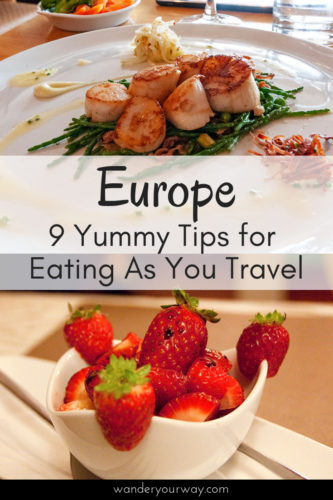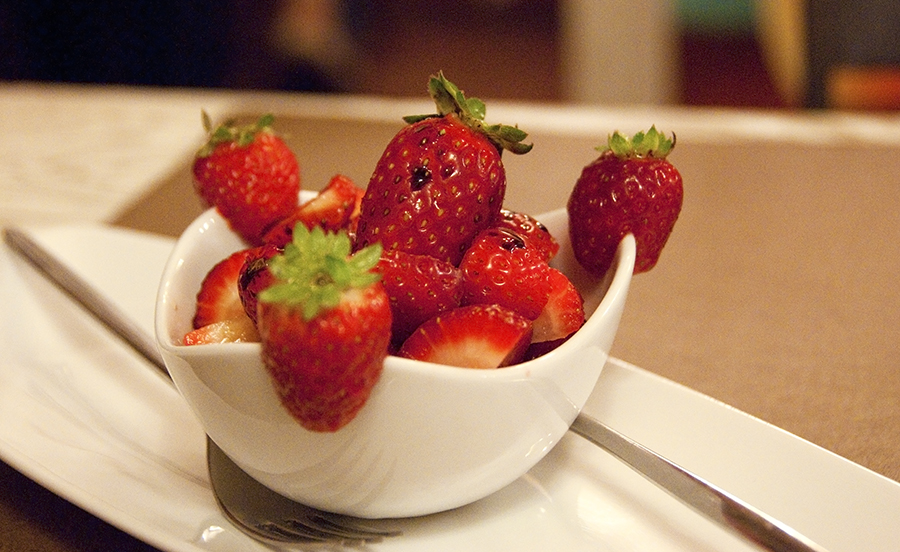Eating in Europe is part of the travel experience.
In fact, I know many of you travel to certain destinations specifically for the food.
There’s so much tasty food in all of Europe from delicious meats and fish to fresh veggies and fruit to delectable desserts.
So what should you eat in Europe?
And maybe the better question: How should you eat in Europe?
Below are the best tips for eating in Europe.
Eat the local specialties
The number 1 tip is to bite into whatever the local specialties are.
Typically these foods are grown and made right in that country or region of that country.
And often there is some kind of cultural significance to these foods — they’re part of a tradition.
So think about trying haggis in Scotland or goulash in Hungary.
Now, I know sometimes these foods may seem a bit strange or unappetizing.
But at least take a wee bite.
You never know — you may end up loving it!
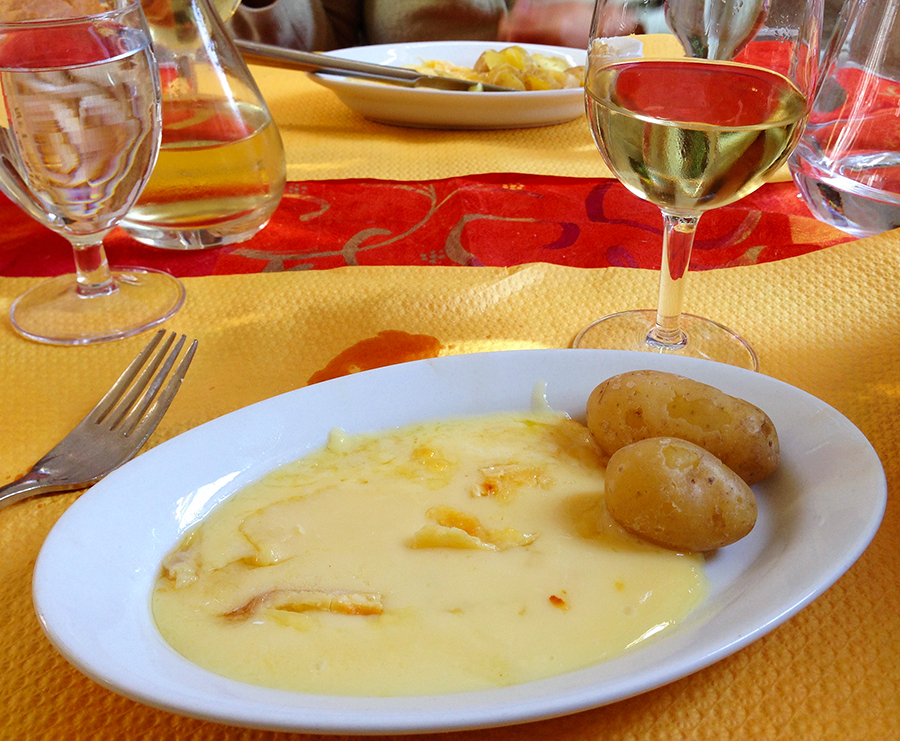
Eating Raclette in Geneva, Switzerland. Potatoes and melted cheese along with some local Swiss white wine. Yum!
Fill up on breakfast
If you get breakfast as part of the price of your room, then I suggest filling up on this meal.
I didn’t say, “Stuff yourself silly.”
Just eat a good breakfast as you’ll save money later in the day by only needing a light snack for lunch.
Ireland and the UK are countries where you can eat a hearty breakfast and make it last most of the day.
However, I know some folks aren’t big breakfast eaters like me.
Still take advantage and eat enough to get through the first part of your day.
The other point of eating a good breakfast is that you often get some local specialties such as eggs from the hens out back or freshly baked bread. Yum!
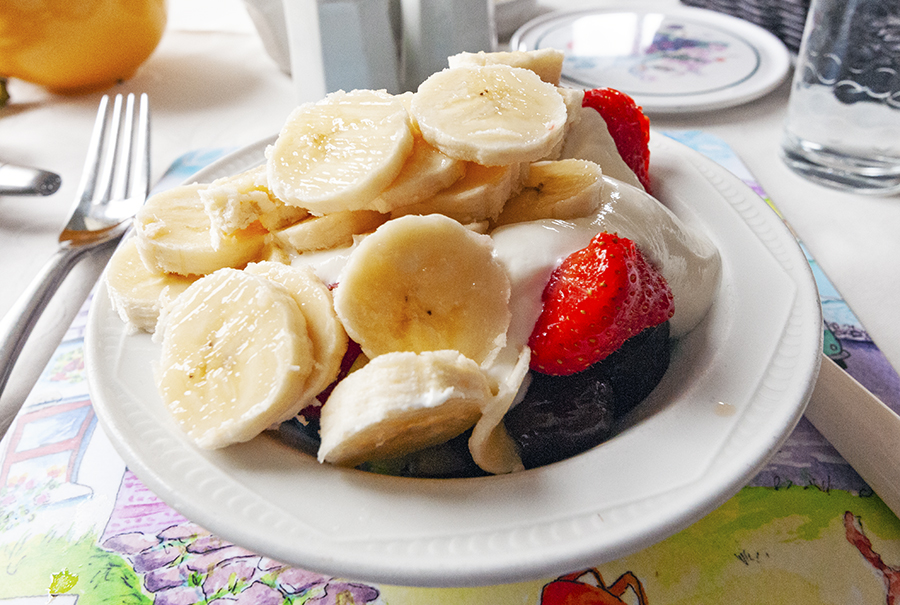
Fill up on breakfast if it’s included with your room. It will save you money — and it can be pretty tasty!
Eat where the locals eat
This is probably my number 1 tip for eating in Europe.
I cannot emphasize this enough but try NOT to eat at the touristy restaurants.
First of all, they’re usually more expensive.
Secondly, the food is usually — not always — mediocre.
The best restaurant, trattoria or bistro is the one where the locals eat.
And if you’re not sure where these are, then simply ask the host at your accommodation or ask a local shop keeper.
Ask her where she eats and have her write down the name and address.
Often they are tucked away down smaller lanes, more hidden from the main tourist traffic.
I will bet you that the food will be delicious and you’ll get to be a local for that meal.
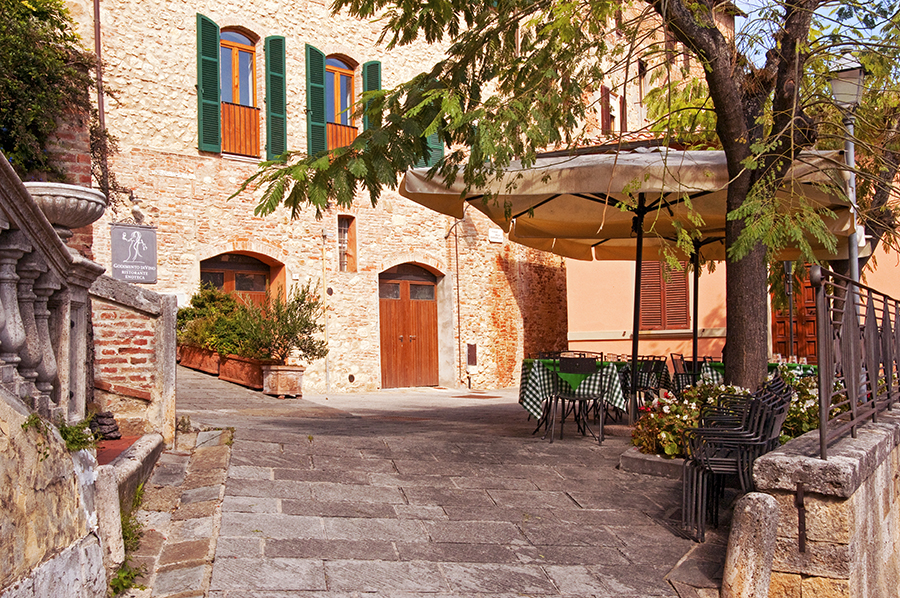
Outdoor restaurant, Godimento di Vino in Montepulciano, Italy. Find places tucked away like this one and where the locals eat.
Find places with small menus
Adding to the above tip is to eat at places with small menus or with hand written menus — or even no menu at all!
When a restaurant has a small menu it typically means that, while they don’t have loads of choices, what they make, they make well.
I find that some of the best meals I’ve had in my travels have been in restaurants with small menus or hand written menus with what is fresh that day.
This applies very much to fish and seafood if you are at a destination near the sea.
Sometimes there is no menu at all and the waiter will simply tell you what’s available that evening.
This means you’re getting what’s fresh.
Just be sure to ask for prices if you are watching your budget.
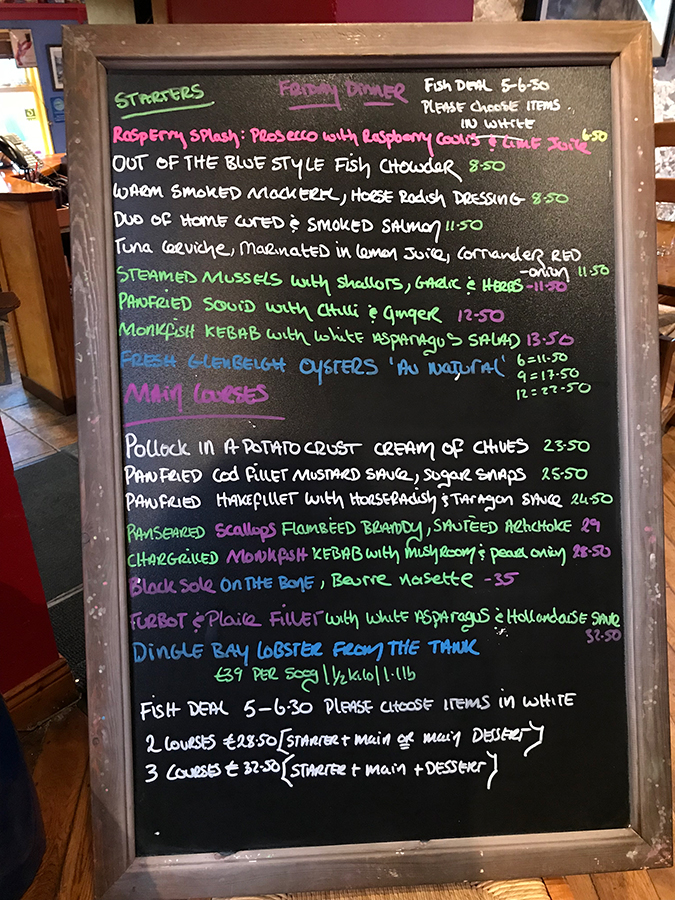
This is the best kind of menu from Out of the Blue in Dingle, Ireland. It’s written out each day and isn’t all that large. The food was outstanding here.
Visit the markets
Because I travel for lengthy periods of time, I don’t eat out every day.
However, I think even if you are on a 2 week trip, you should do the same.
The local markets are a fabulous way to see what eating in Europe is like for an Italian, a German or a Dane.
You might fight a local outdoor market, kind of like a farmers’ market, in a city or town you’re visiting.
Or you might find a small fruit and veggie shop or cheese shop or bakery to buy some scrumptious local food.
You may simply shop at the local supermarket which is always a kick, in my opinion, as it’s very much a cultural learning experience.
Take what you’ve bought and create a meal.
I’m a huge fan of a do-it-yourself meal of salami, cheese, bread, veggies and wine in Italy.
The food is fresh and tasty AND I’ve had fun shopping with the locals.
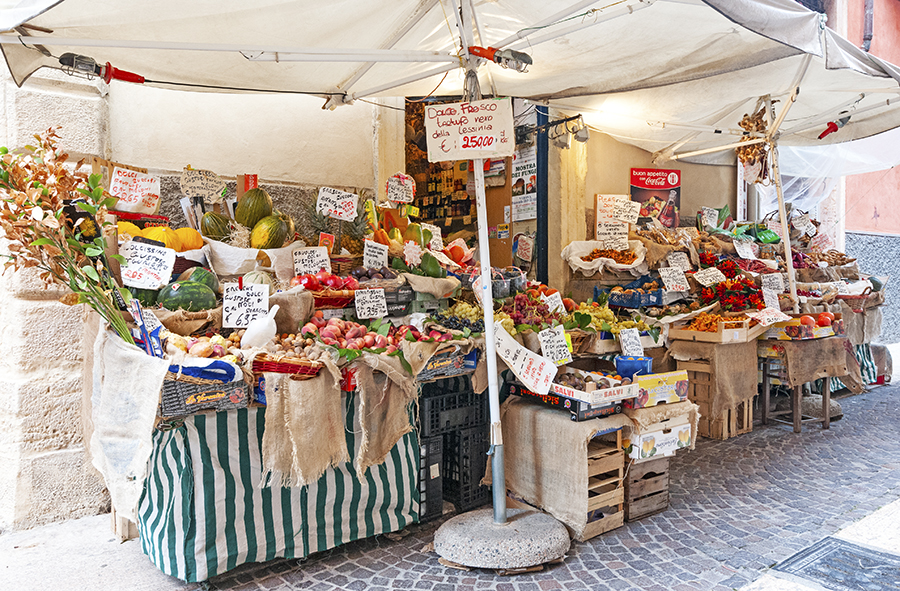
I love all this food sitting out of a small shop in Verona, Italy. This is a great place to pick up some fresh food for a do-it-yourself meal.
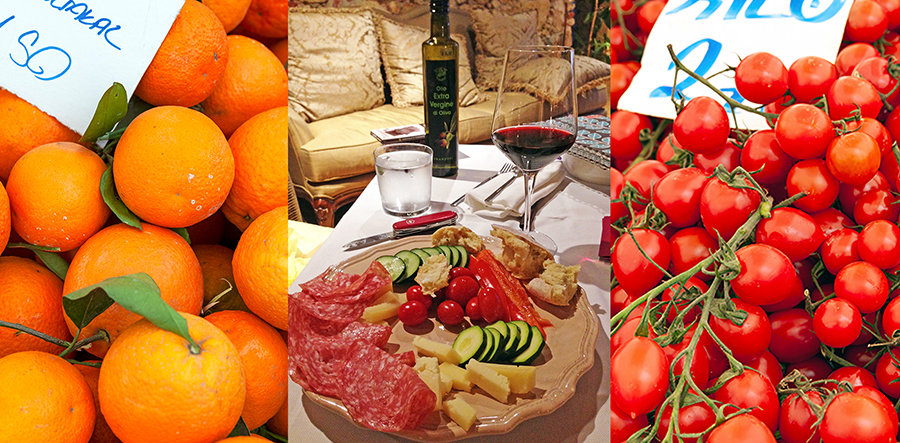
Shopping at the markets is a great way to not only save money, but is a wonderful way to eat fresh, local food and get into the local culture of the place you are traveling.
On a budget? Try lunch instead
One way to save a bit as you are traveling in Europe is to eat lunch out instead of dinner.
Lunch menus are typically less expensive, but no less delicious.
And sometimes getting a reservation is easier too.
You can have a lovely meal in the early afternoon and then eat a do-it-yourself meal or tapas and a drink for dinner.
I think many folks overlook this option.
It also gives you a break in the middle of the day.
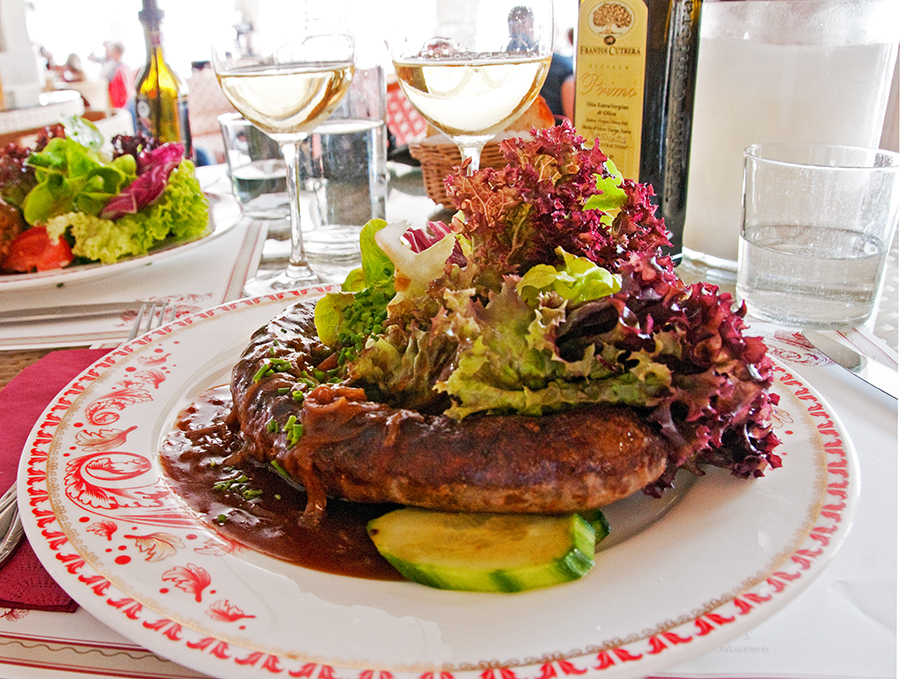
Eating lunch in Lucerne, Switzerland. Save some money and go for lunch instead of dinner. It’s just as tasty!
Slow down
My favorite tip for eating in Europe is to slow down.
We Americans, in particular, eat in such a hurry.
But eating in Europe is so different in that they tend to slow down for many of their meals.
It’s not just about eating the food, but about the experience — conversation with friends and family, savoring the flavors, enjoying the ambience.
I remember taking my folks to Ireland and really stressing this to my dad, who has always been a fast eater.
My mom lived up to her nickname, Turtle, in every aspect of her life including eating.
But I kept telling my dad, “We aren’t in a hurry. Take your time eating. Really enjoy the food and the experience.”
He did pretty good considering he was 79 at the time — and trying to teach an old dog new tricks isn’t that easy.
Remember that in most European countries the waiters won’t rush you to eat.
They won’t bring the check to you until you ask.
They’re not concerned with “turning over” the table as they aren’t reliant on tips to earn a living.
You can sit and savor and talk or people watch for as long as you like.
This is part of your travel experience so really revel in it.
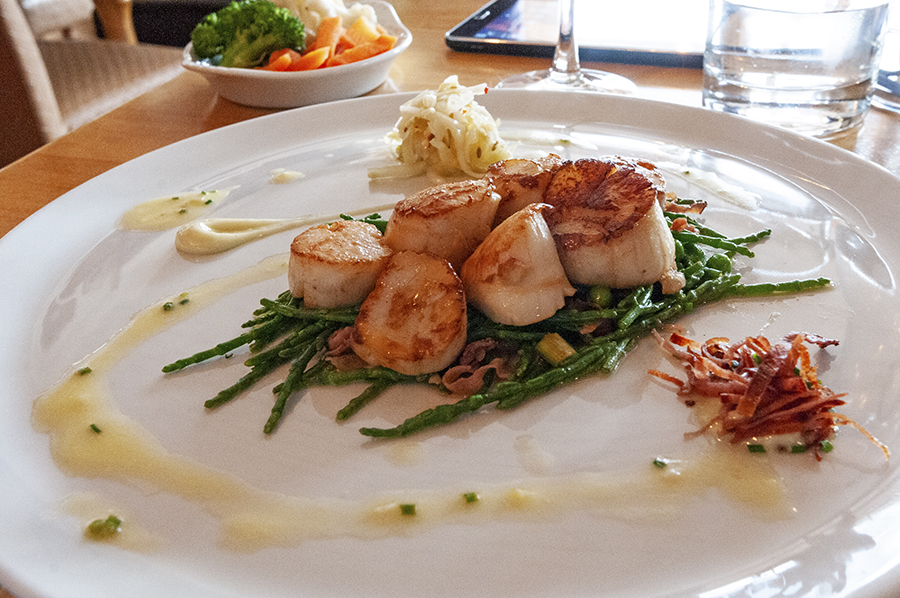
Even when I eat alone, I slow down and enjoy my food. I take in the ambience of the place and often chat with the employees of the restaurant to get to know more about the destination and its culture. Tasty scallops from Darcy Twelve in Clifden, Ireland.
Take a cooking class or a food tour
Tip number 8 is for those who are really into food.
If food is your thing, then take a cooking class or a food tour.
In fact, there are some food tours that are also cooking classes.
You’ll go to the local markets to purchase your ingredients, learning about them, then return to the kitchen to cook it all up.
And after you’ve created that yummy food, you get to eat it!
There are food tours that take you to different markets or cafes or restaurants where you might taste some of the local specialties and learn how they’re made and how they became local specialties.
You can find cooking classes that are just 1 day or you can spend a week cooking and learning about the culture of that destination.
The choice is yours.
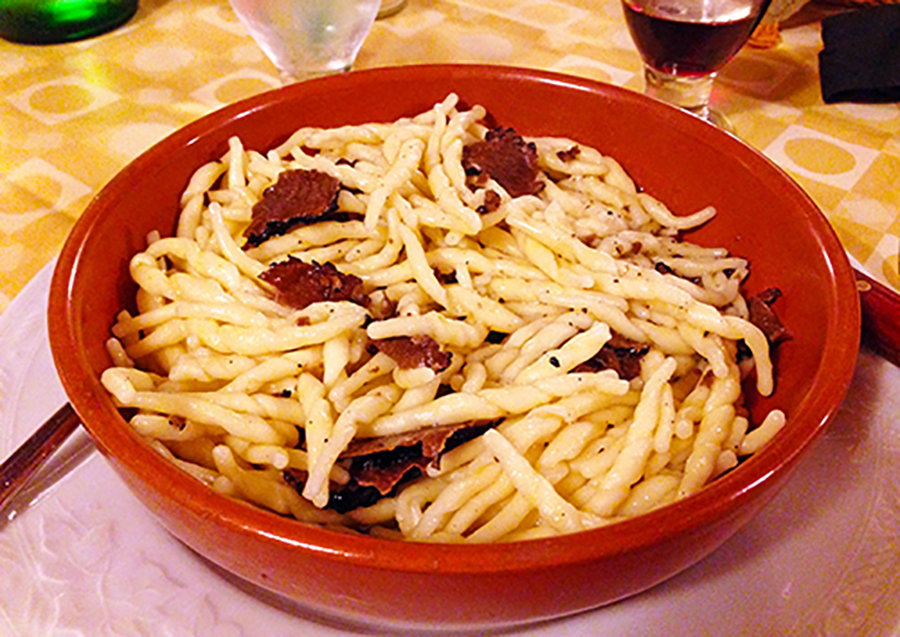
You can take a cooking class where you can learn to make the local pasta in Italy.
Lastly…Pack your adventurous taste buds
I know some folks don’t care as much about food and are so damn picky that they’ll simply order a burger every time they go out no matter where they are.
I really hope that as you travel in Europe that you’ll at least try to be a bit adventurous when you eat.
Eating in Europe is so much a part of the entire travel experience that it would be a shame to miss out.
Because I’m a fish-eating vegetarian at home, I missed out on eating the tasty Iberian ham on my trip to Spain.
I regret this.
That’s why I let go of my vegetarianism a wee bit when I travel.
I don’t go crazy eating all kinds of meat, but I do try a few things here and there.
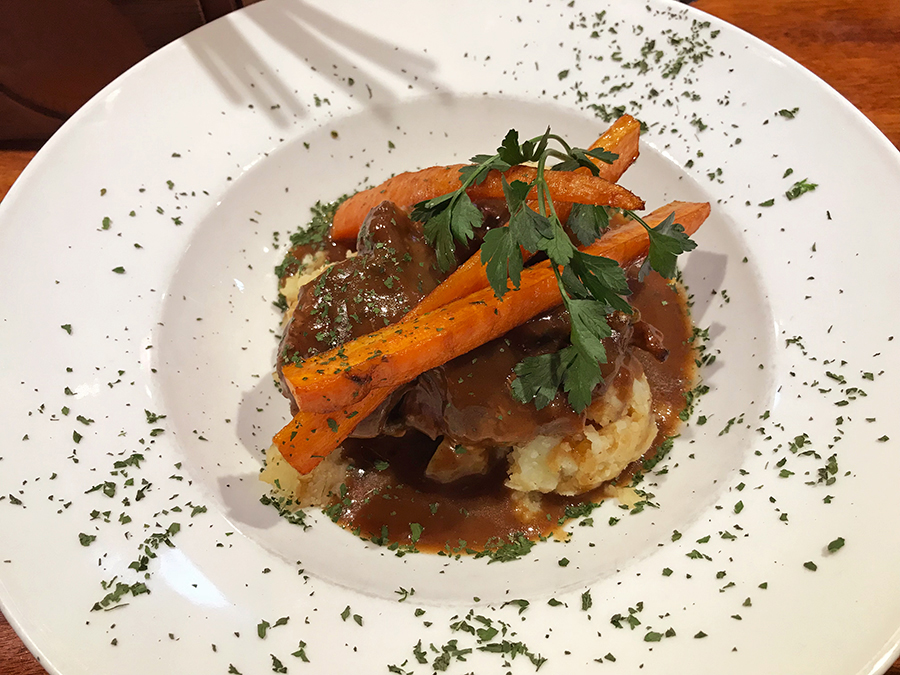
Eating some very tasty beef in Clifden, Ireland. I let go of some of my eating “rules” as I travel so I can truly experience a destination. This beef was delish!!
My point is, don’t be afraid to let go a bit and push at those boundaries.
Go ahead and try eating something a little different.
You may be pleasantly surprised.
Bon appétit!
